Mangrove forests – the all-round heroes
7 vital functions + 4 unique mangrove facts
- AutorIn: Chris Kaiser
- Datum:
- Kategorie: Hacks, tips, knowledge
Share with your community on LinkedIn now:
To mark International Mangrove Ecosystem Conservation Day on July 26, 2021, this article is all about mangrove forests: What they are, 7 vital functions, their threats and 4 unique mangrove facts to share with your friends.
To mark International Mangrove Ecosystem Conservation Day on July 26, 2021, this article is all about mangrove forests: What they are, 7 vital functions, their threats and 4 unique mangrove facts to share with your friends.
Let’s start with the basics and the question of what mangroves are.

What are mangrove forests?
Some people think that a mangrove is a tree species like a birch or a beech. *cough* Okay, okay, by “some” I mean myself, because that’s what I thought before I started working for Click A Tree.
But I finally know better and am happy to share my newfound knowledge with you.
Mangroves are tropical plants and trees that live in tidal environments. You will find them where the coast meets the sea or other bodies of water. Although mangroves can live in salt water, they do not need it to survive.
In short, mangrove forests are the collection of trees and shrubs that grow between water and land.
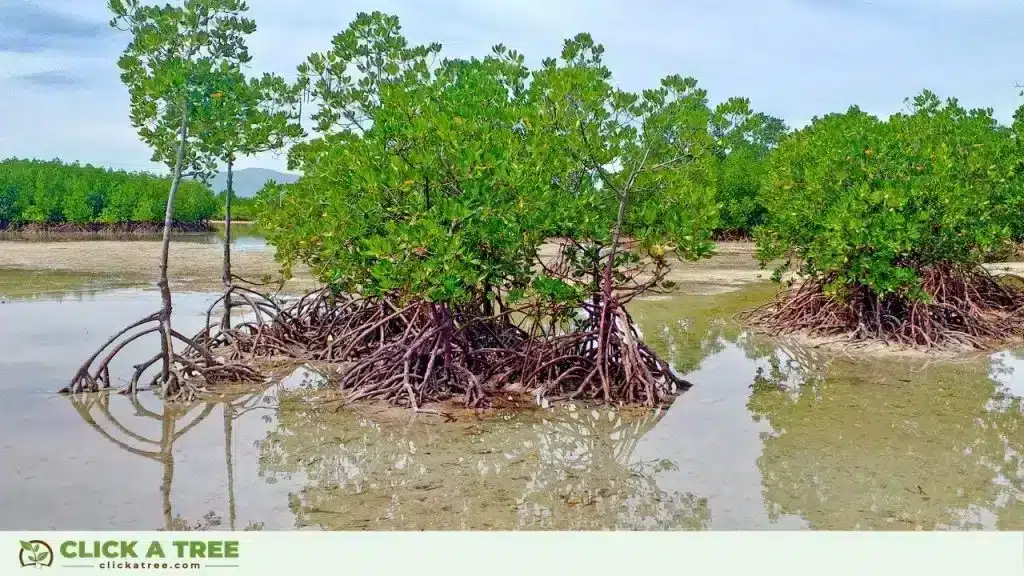
With their large roots emerging from the ground, they are not only a magical sight, they also bring with them a host of vital benefits for humans, marine and animal life and the planet.
7 vital functions of mangrove forests
1. coastal protection
Mangroves form natural storm barriers as they reduce erosion caused by storm surges, waves and currents. So they protect everything behind them: from people and houses to wild animals.
You can see this in more detail in the video.
2. they prevent flooding
Mangrove forests reduce the risk of flooding by absorbing water from heavy rainfall and storm surges.
3. protection of underwater life
Many of our aquatic friends need mangrove forests to survive. The water surrounding the roots is rich in nutrients and safe for young underwater animals. Milkfish and shrimps, for example, spend their childhood days here, protected from predators.
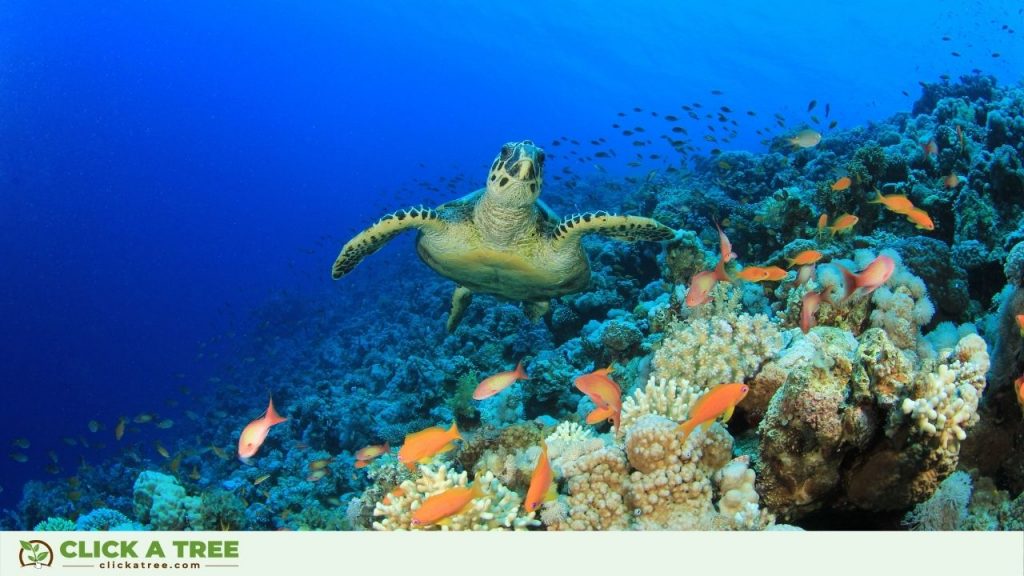
4. you create a home for wild animals
But they also provide protection for wild animals on land. In the Philippines alone, where Click A Tree plants mangroves (more on this in the next section), there are more than a hundred mammals and over 170 bird species that cannot be found anywhere else in the world. We believe this is worth protecting, don’t we?
Already convinced that it is important to create mangrove forests? Then plant a tree now:
5. reduction of pollutants
As mentioned in the first point, mangrove trees form a natural storm barrier, but not only that, their roots also remove pollutants and sediments before they can reach coral reefs and seagrass beds.
6. you are climate heroes
They are among the most valuable carbon stores on our planet. We have kept our calculations conservative. But an average mangrove tree absorbs around 300 kg of CO2 over 25 years.
According to this, they absorb 25 kg per year – and that doesn’t even take into account all the baby mangrove trees that join the party over the years.
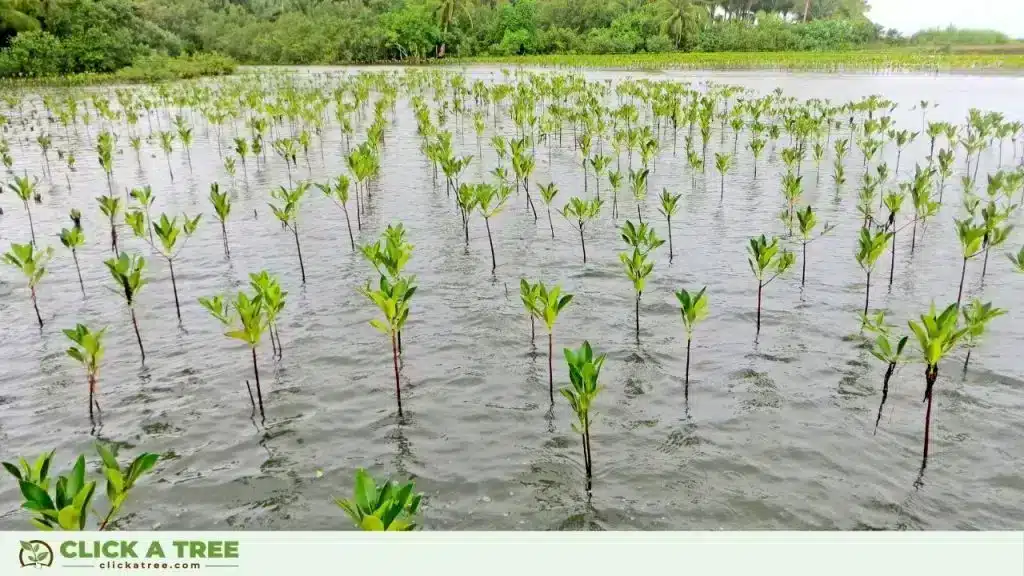
7. creation of jobs and opportunities
Planting trees means creating jobs and opportunities for people. At Click A Tree, we pride ourselves on working with full-time employees. We believe that the creation of forests should not only be charitable, but should also be rewarded.
Our team at the tree planting site not only plants the trees, but also looks after them to give them the best chance of survival. This is why our mangrove trees have an incredible survival rate of 93%. Amazing, isn’t it?
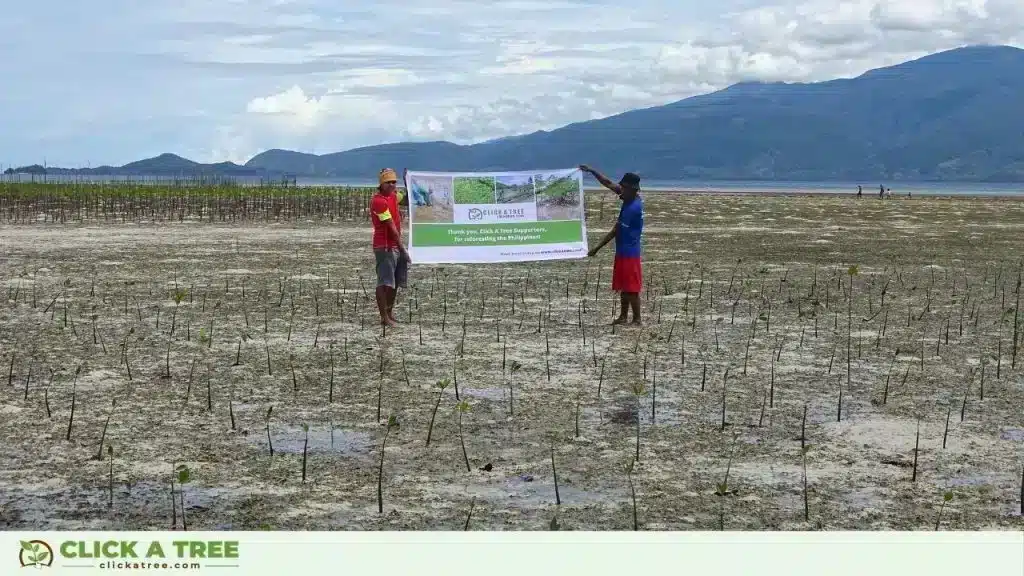
Now for the sad part. Although mangroves have so many great and vital benefits, the size of mangrove areas is shrinking. Learn more about the shocking rate of deforestation and the threat to mangrove forests.
Are we already friends on social media? Pssst… we have a surprise planned this month. Follow us on our social media channels to find out what it is.
Threats to mangrove forests
Around a third of the world’s mangrove forests have been destroyed since 1980¹. The main causes of the loss of these forests are man-made:
Trees are being removed to improve the quality of the beach and to build tourist resorts. Trees are also being removed because they are incompatible with the many shrimp farms in operation (harmful chemicals are used in the waters). Swamps are also being drained, i.e. mangrove trees are being removed to make room for human settlements.
Because there is no foothold in sight, forests have no chance to take their natural course and rebuild themselves. That’s why our mission is to restore native tree species, create habitat and provide full-time employment with a fair salary.
Would you like to be part of our mission? Help us create habitats and jobs by planting trees in the Philippines.
Where Click A Tree plants mangroves
Our tree planting in the Philippines takes place on Mindanao Island, the second largest island in the country. To put this into perspective, Mindanao is only slightly larger than the European nation of Portugal or the US state of Indiana.
More precisely in Balete Bay, near Sleeping Dinosaur Island¹. Sounds exotic, doesn’t it? Like much of the Philippines, it is naturally green. In the coming years, there will be even more greenery and wildlife thanks to the tree planting.

In addition to planting mangrove trees in the Philippines, we collect 1 kg of plastic from the sea for every tree planted. Two victories for the planet and its inhabitants!
Find out more about our project in the Philippines here.
Would you like to impress your friends with your knowledge of nature? These 4 mangrove facts will help you!
4 unique and amazing mangrove facts
1. friends of salt
They are the only tree species that can tolerate salt water. If they absorb too much salt, they simply excrete it through their leaves.
2. a safe place for underwater life
The underwater roots and branches create a safe space for underwater life, including many species of fish, crabs, shrimps and other crustaceans.
3. mangrove species: the same, but different
Scientists and researchers cannot agree on the number of species, as a distinction must be made between a true mangrove and a “mangrove associate”.
A mangrove associate tolerates salt water, but lacks other characteristics that a true mangrove has. Depending on what someone calls a mangrove, it is estimated that there are between 54 and 80 species of mangrove ².
4. they come in different shapes and sizes
A fascinating fact is that mangrove species come in all shapes and sizes. From small shrubs to tall trees of 63 meters ³.
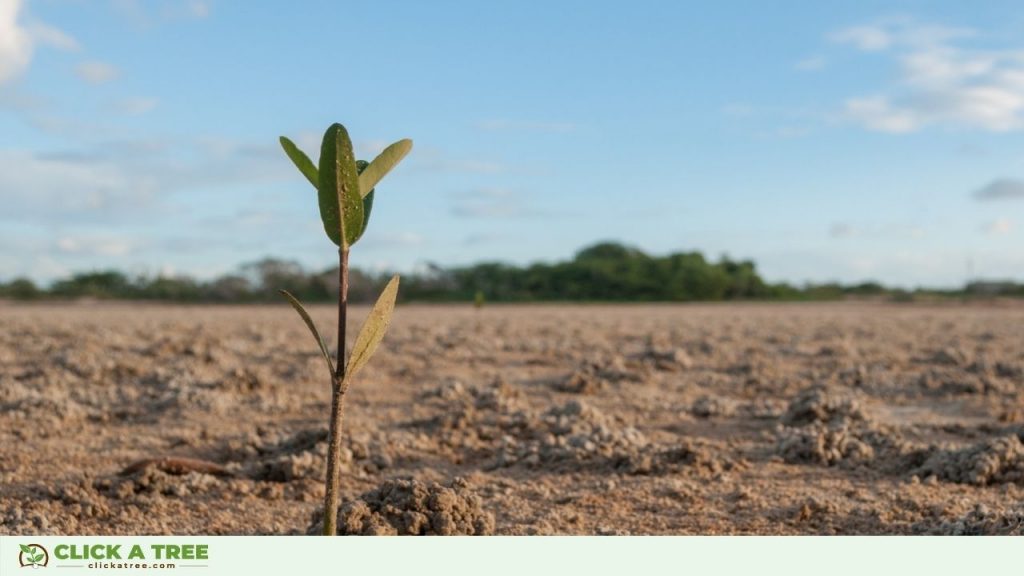
Celebrate International Mangrove Day with your friends
Share this article with your friends and family and tell them all these cool facts and features of mangrove forests. The more people know how important mangroves are, the better our chances of creating large and beautiful mangrove forests.
Would you like to do more? No problem. Plant a tree in the Philippines from the comfort of your own home. Creating forests and habitats will not get any easier.
Sources:
¹ https://www.wwf.de/themen-projekte/meere-kuesten/schutz-der-kuesten/mangroven
² https://ocean.si.edu/ocean-life/plants-algae/mangroves
³ https://nature4climate.org/news/mangroves-seen-from-space-and-taller-than-you-might-think/